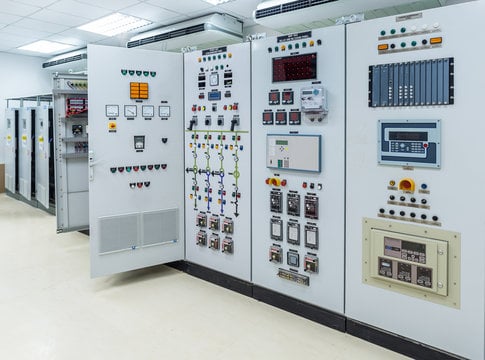The ability of equipment to use the energy supplied to it is referred to as power quality. Power quality issues lead to excessive energy usage and bills, high maintenance costs, direct economic repercussions, output loss, irrecoverable downtime and resources, equipment instability, and failure. Any organization must assess energy management, and any energy management program must include an assessment of power quality. CareLabs provides a range of services to address various energy-related issues. Based on our expertise in this area, we offer high-quality research and analytical services.
Quality issues with electricity
Compared to reliability, quality of the power supply is a more complex and subtle indicator. The suitability and compatibility of the electrical supply are more important than supply availability.
Variations in power quality may be divided into two groups:
Disruptions:
Disturbances occur when there is an anomaly in the voltage or current. Transient voltages can be identified when the peak magnitude exceeds a specified threshold. When the RMS variation exceeds a certain limit, RMS voltage variations such as sags, surges, and interruptions can be identified.
Variations in the steady-state:
Examples of steady-state fluctuations are RMS voltage variations and harmonic wave distortion. Voltage and current must be measured over time to sample these fluctuations. This sampled data is most effectively presented as an amount of voltage distortion over time and then examined using techniques such as the average distortion level, which is 95% unlikely to be surpassed, etc.
Among the factors that affect supply quality are:
- Voltage stability.
- voltage frequency of the supply falls.
- Voltage spikes.
- Transient voltages.
- Harmonic deviances.
- Radiofrequency estimate.
The bulk of these component are challenging to recognize and observe. Typically, its examination requires the use of specialized testing equipment, and it must be conducted by certified technicians or engineers.
Voltage Constant:
The electrical system’s steady-state voltage levels change continuously in reaction to the load and other system events. Voltage levels often tend to drop as the load rises. When a load is removed, voltage levels also increase.
Unbalanced voltage:
It alludes to a change in the phase angle displacement or three-phase supply value. Unbalanced loads and unbalanced circuit impedances can also contribute to it. It results in equipment failure, heat effects, and efficiency loss.
Voltage variations:
Short-lived dips in the RMS supply voltage that can last up to one minute each are referred to as voltage sags. Voltage swells are transient rises in the RMS supply voltage that take place across a threshold limit ranging from 0.5 cycles to 1 minute. They can occur at any time.
Frequency of supply:
The supply frequency is the frequency at which the supply voltage wave alternates. The National Electricity Market Management Company, or NEMMCO, establishes the frequency standards for the National Electricity Market. Frequency standards are decided by the local generating authority outside of the National Electricity Market.
Deformation of Harmonics:
This distortion of the source voltage or current waveform is periodic and constant. Extra losses, flickering lights, malfunctions, radio interference, motor vibrations, and poor performance of sensitive equipment can all be brought on by excessive harmonics.
The CareLabs’ process for analysing power quality includes the following steps:
- Specifying the onsite evaluation and the power quality survey’s objectives.
- To continue your research, doodle a one-line diagram of the entire electrical system.
- A power analyzer is linked at various places in the distribution end to collect data from each distinct system.
- Keeping up the distribution network shown in the single-line diagram.
- Examining and analysing the data collected, as well as doing additional analysis
- The submission of a report and a solution suggestion
You may get help with power quality issues from our team of highly trained professionals. Your power quality is at the greatest level thanks to a thorough system investigation and analysis. For more details about our power quality analysis service, get in touch with us!




